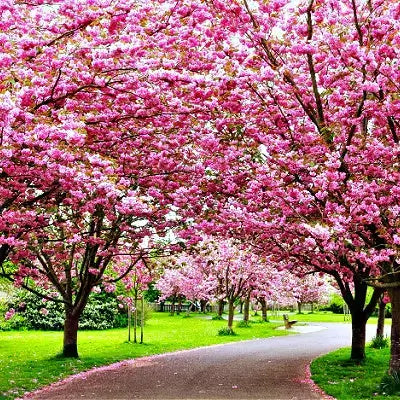Few things in a landscape make passersby stop and notice more than a grove of flowering trees.
There’s a flowering trees for just about every hardiness zone in the country, so no front or backyard needs to be without a tree that brings forth stunningly beautiful flowers in the spring and summer.
Here are a few of them:
Dogwoods
The flowers on dogwood trees aren’t flowers at all but the bracts that surround the actual flowers. Nevertheless, both white flowering dogwood trees and pink dogwood trees are prized for their early and elegant burst of color in the spring. Besides their flowers, dogwoods are also grown for their colorful bark or the berries that fall. The dogwood is a small tree that grows between five and 30 feet tall in hardiness zones 2 through 8; Both white flowering dogwood trees and pink dogwood trees like full sun to partial shade and moist, well-drained, acidic soil.
Crepe Myrtles
A favorite of the southeastern states, crepe myrtles have beautiful flowers ranging from white to cream to hot pink to lavender and purple. The tree grows from 15 to 25 feet high and likes warm, sunny locations. Besides the beautiful flowers, crepe myrtles also have exciting, mottled bark and leaves that turn red in the fall. The tree likes well-drained soil in hardiness zones 7 to 9.
Empress Trees
Empress trees or paulownia are fast-growing trees with spectacular flower that appear before the leaves. Like dogwoods, empress trees flower in early spring. The flower is a gorgeous purple and resembles the foxglove, which gives the tree an alternate name. The tree is easy to take care of and isn’t too particular about the soil type. The tree grows between 30 and 80 feet tall in zones 4 to 10.

